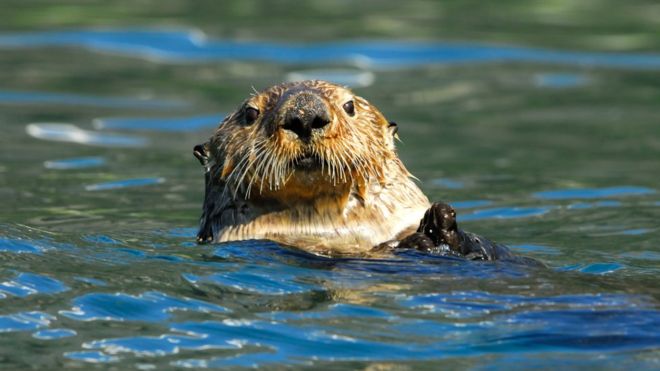Climate change: Sea ice loss linked to spread of deadly virus
The decline in sea ice seen in the Arctic in recent decades has been linked by scientists to the spread of a deadly virus in marine mammals.
Climate change: Sea ice loss linked to spread of deadly virus

The decline in sea ice seen in the Arctic in recent decades has been linked by scientists to the spread of a deadly virus in marine mammals.
Researchers found that Phocine distemper virus (PDV) had spread from animals in the North Atlantic to populations in the North Pacific.
The scientists say the spread of pathogens could become more common as ice declines further.
The 15-year study tracked seals, sea lions and otters via satellite.The loss of sea ice in the Arctic has been one of the most visible signs of climate change on the planet over the past four decades. According to the Intergovernmental Panel on Climate Change, the ice has been retreating by around 12% per decade between 1979 and 2018.
"These sea ice changes in September are likely unprecedented for at least 1,000 years. Arctic sea ice has thinned, concurrent with a transition to younger ice. Between 1979 and 2018, the real proportion of multi-year ice that is at least five years old has declined by approximately 90%," the IPCC said in their report on the oceans and the cryosphere published in September.
Against this changing background, researchers have investigated the likely spread of the PDV infection, which caused a large number of deaths among harbour seals in the North Atlantic in 2002.
 NOAA
NOAABut outbreaks of the virus had not been seen in marine creatures in the North Pacific until 2004 when PDV was found in northern sea otters in Alaska.
Samples were collected from 2,500 marine mammals in a variety of locations over the course of the study. Satellite data from tagged animals recorded locations. This was correlated with data on sea ice loss.
The scientists say that the record melt in August 2002 was followed by widespread exposure and infection with PDV in Steller sea lions in the North Pacific in 2003 and 2004 with over 30% of animals testing positive. PDV prevalence then declined until it peaked again in 2009, following on from the presence of open water routes in 2008.
 NOAA
NOAA"The loss of sea ice is leading marine wildlife to seek and forage in new habitats and removing that physical barrier, allowing for new pathways for them to move," said author Dr Tracey Goldstein, from the University of California, Davis.
"As animals move and come in contact with other species, they carry opportunities to introduce and transmit new infectious disease, with potentially devastating impacts."
The authors warn that this trend could continue as they believe climate driven changes in the Arctic ocean will increase. The opportunities for the spread of pathogens will likely grow, with uncertain health outcomes for many species.
The study has been published in the journal, Scientific Reports.
By Matt McGrath


